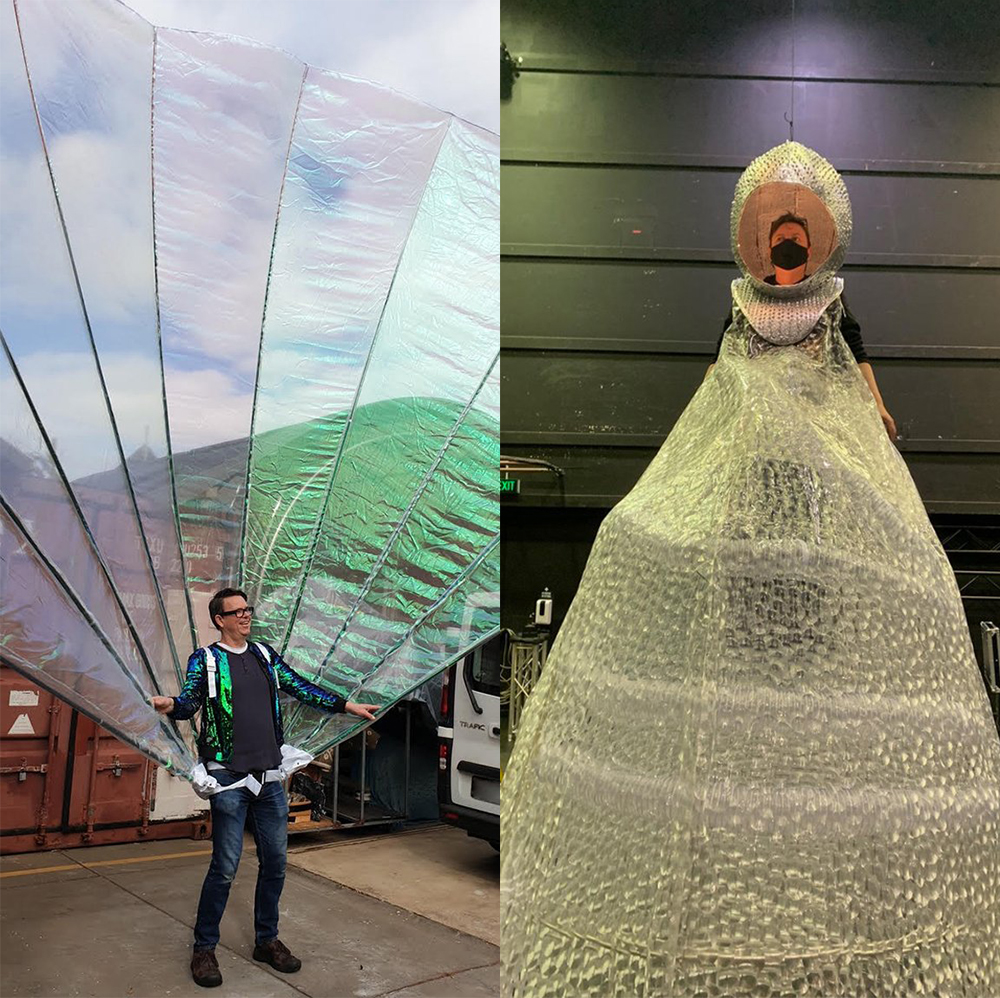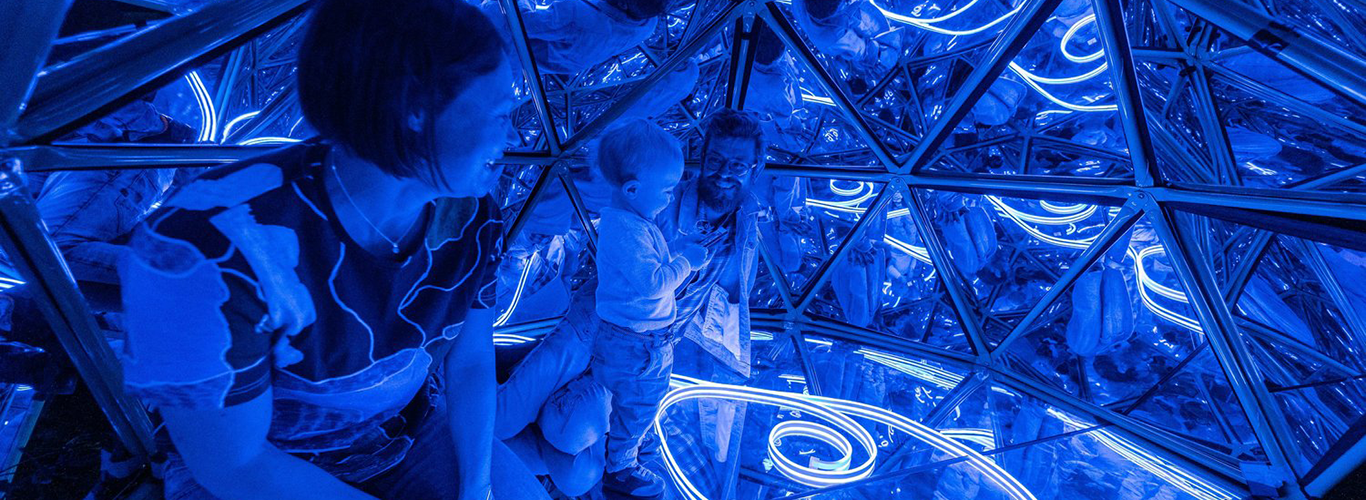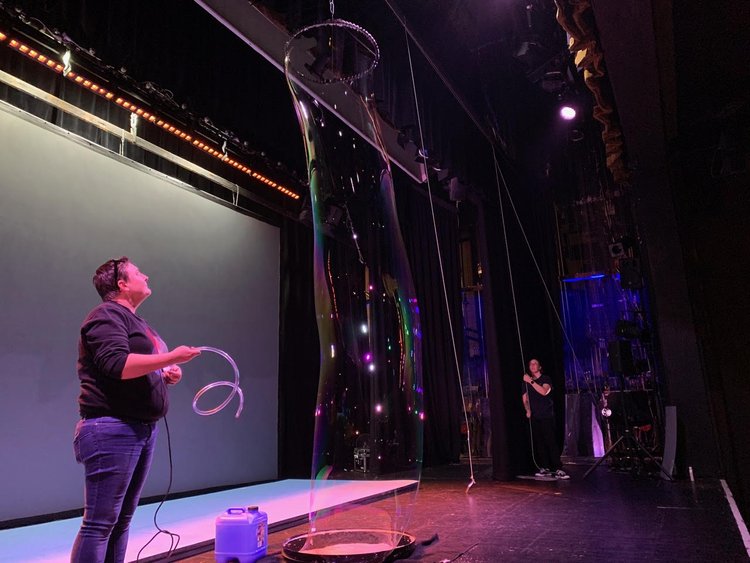What are your roles at Patch and how do you work as a team?
G – I’m the Artistic Director at Patch – I come up with the ideas for our shows and installations and work with Maddog and other creatives to bring these ideas to life.
M – I’m the Creative Associate at Patch – during the creative process I spend a lot of time making things (and lots of time at Bunnings!).
Once we have an idea we purchase the required technology together and I get to work on plans or models. Sometimes we bring other artists or technicians in to help make the prototype. We then play with the prototype in our studio to refine it (or recreate it entirely).
What is an interactive installation?
G – An interactive installation is an art experience that involves the audience being at the centre of the experience and often manipulating or impacting the outcome. I found my love of this style of presenting art from attending this amazing art meets landscape festival in Holland – Oerol.
How do you get ideas? Where do you draw inspiration?
M – Our ideas often build over time – so something that might not have succeeded for one work may return years later or spark a new, related idea.
G – We are often inspired by Chinese gadgets or toys. We make analogue versions of something digital or play with the scale of something. We see something that is fun and try and expand or combine it with something else, building our web of ideas. Some of our best ideas come from problem solving. It is a bit like a jigsaw puzzle, and sometimes combining two ideas together onstage brings the best results.


